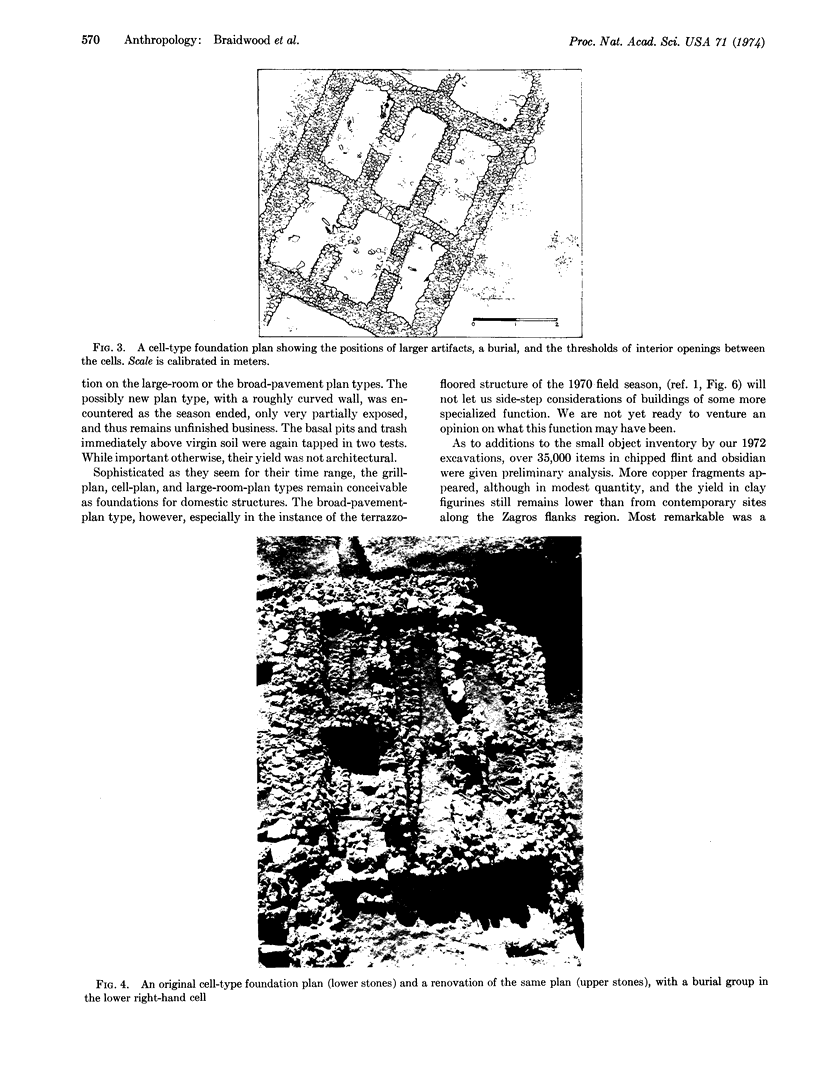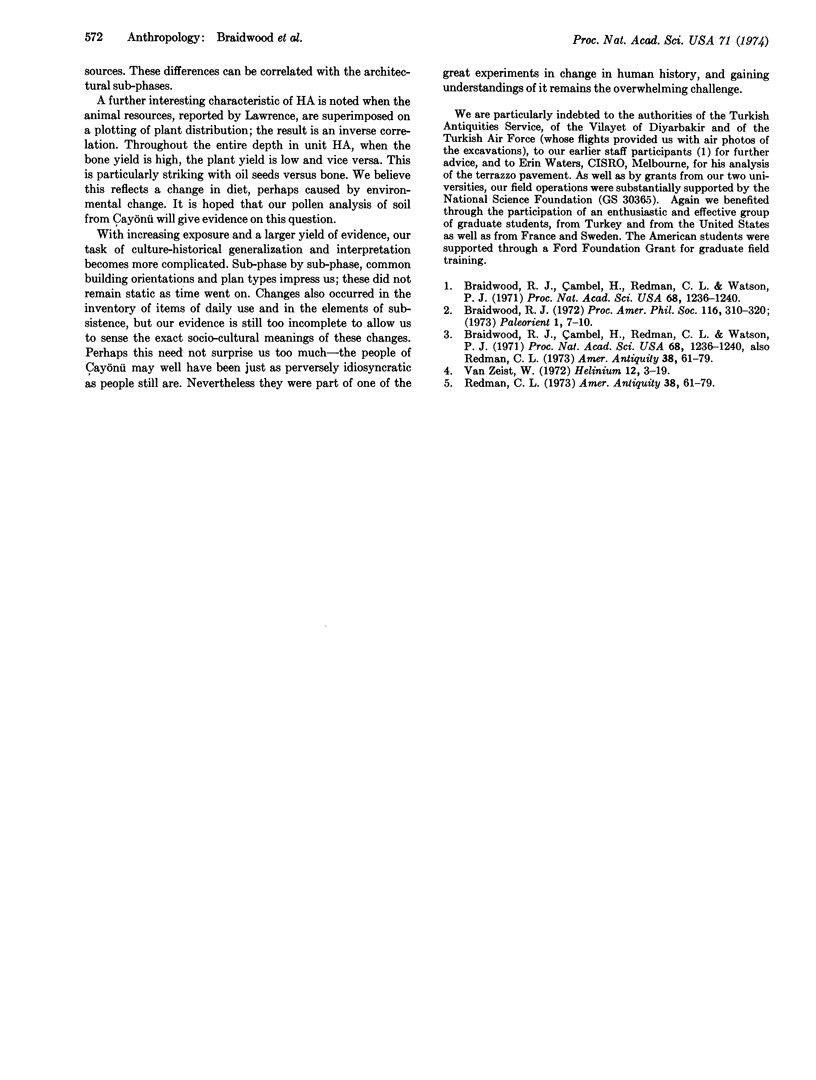Abstract
The mound known as Çayönü Tepesi (38° 16′ N; 39° 43′ E) in southeastern Turkey is one of the increasing number of early village sites which, since World War II, have been excavated archeologically in greater southwestern Asia. The evidence recovered in the autumn 1972 campaign of the Joint Istanbul-Chicago Prehistoric Project is briefly described, with particular attention to Çayönü's architectural remains, which are most remarkable, considering the site's date of about 7000 B.C. There was evidence of domesticated food plants from the beginning but animal domesticates were not present (save the dog) until later in the major prehistoric phase of occupation.
Keywords: Near Eastern excavations, plant and animal domestication, perennial settlements, early architecture
Full text
PDF




Images in this article
Selected References
These references are in PubMed. This may not be the complete list of references from this article.
- Braidwood R. J., Cambel H., Redman C. L., Watson P. J. Beginnings of village-farming communities in southeastern Turkey. Proc Natl Acad Sci U S A. 1971 Jun;68(6):1236–1240. doi: 10.1073/pnas.68.6.1236. [DOI] [PMC free article] [PubMed] [Google Scholar]
- Braidwood R. J., Cambel H., Redman C. L., Watson P. J. Beginnings of village-farming communities in southeastern Turkey. Proc Natl Acad Sci U S A. 1971 Jun;68(6):1236–1240. doi: 10.1073/pnas.68.6.1236. [DOI] [PMC free article] [PubMed] [Google Scholar]






